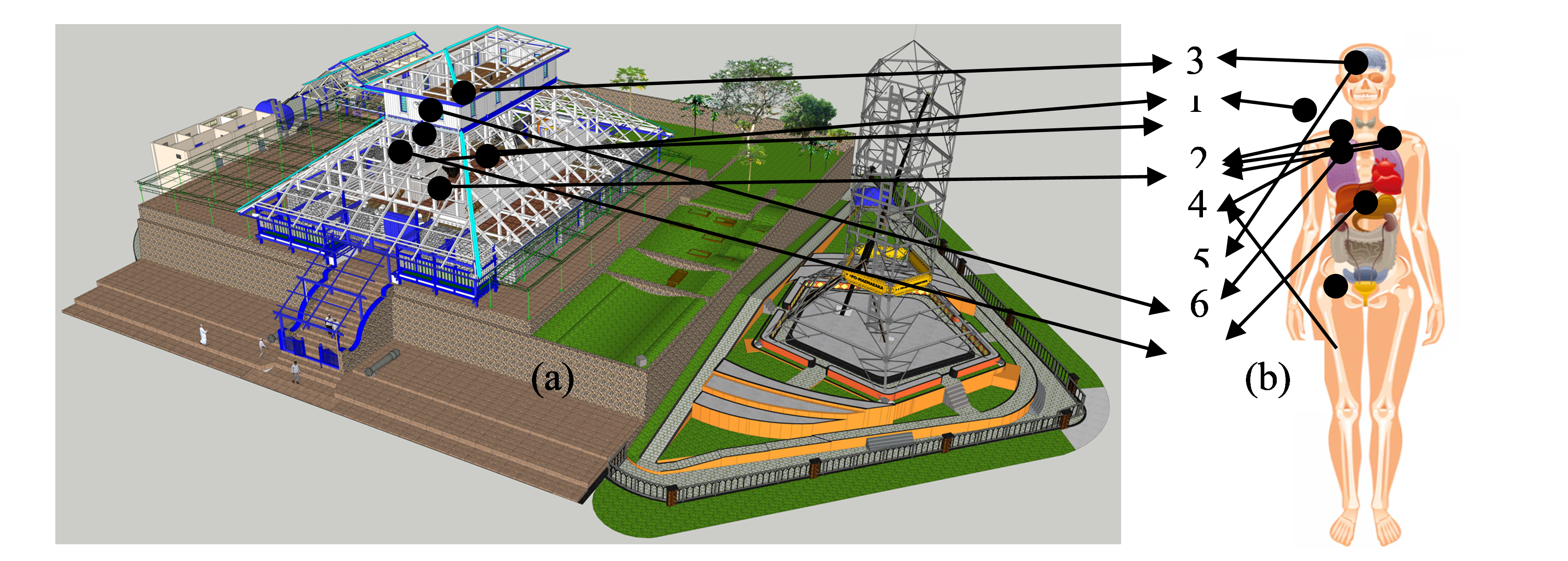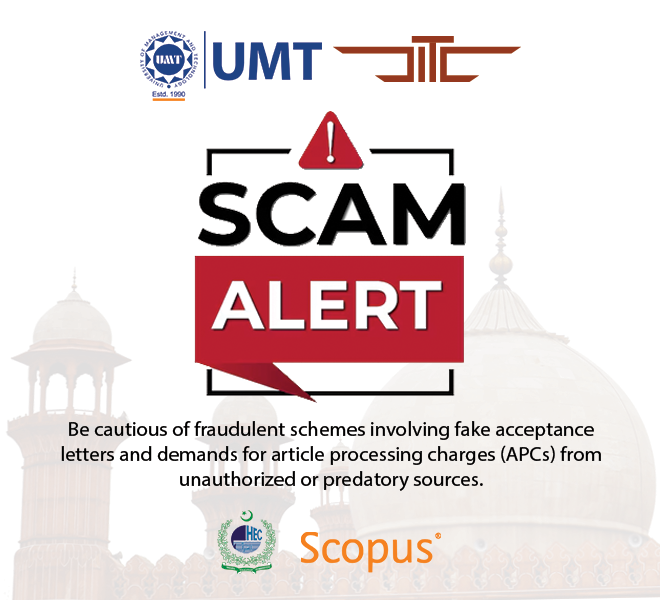Insan Kamil in the Architecture of the Grand Mosque of Buton: The Symbolism of the Seven Grades of Existence and the Twenty Divine Attributes
Abstract
 Abstract Views: 0
Abstract Views: 0
Studying the symbols and meanings of The Grand Mosque of the Sultanate of Buton (TGMotSoB) may pave the way to explore other buildings in Indonesia that embody symbols and meanings related to local belief systems. It may also lay the foundation how spiritual and cultural values are translated into architectural forms. The current studyaimed to explore the symbols and meanings of TGMotSoB regarding the principles of Islamic Sufi teachings of the Seven Grades of Existence (Tsgoe) and the Twenty Divine Attributes (Ttda). The following methods were used: Husserl's transcendental phenomenological paradigm, an inductive approach, a single qualitative methodological choice, and Husserl's transcendental phenomenological method. Data was collected using in-depth interviews, self-reflection, direct observation, and document study. Data analysis techniques comprised grouping data, reducing data, eliminating data, giving themes to data, identifying data, constructing textural descriptions of research subjects, creating structural descriptions, synthesizing data, and answering problems. Data validation techniques were carried out by reflecting on meanings and rational analysis. The study concluded that the symbols and meanings of TGMotSoB represent the concept of the perfect human. The novelty of this research lies in the integration of local Sufi principles with architecture, the revelation of the concept of The Insan Kamil (the perfect human) in visual form, and the approach of using human body symbolism to understand mosque architecture as a spiritual medium.
Downloads
References
Alidu, Shafiu. “The Concept of Insan Kamil (Perfect Man) in Sufi Mysticism: A Comparative Study with the Last Man and Democratic Man in Nietzsche and Rawls’ Political Thought.” Scientific Journal of Arts, Humanities and Social Science 3, no. 2 (2024): 1–6.
Alkadzim, Musa. “The Ontological Capture of Reason And Revelation : Toward A Synthesizing Approach of Ibn ‘ Arabī And Mullā Ṣadrā.” Kanz Philosophia: A Journal for Islamic Philosophy and Mysticism 9, no. 2 (2023): 215–32.
Ariyanti, Rahayuningsih Deasy., Sudarma Made, Djamhuri Ali, and Nurkholis. “The Soul Journey of Accountants In Developing Ethical Awareness: Evoking Creativity Potential Within Self to Reach the Insan Kamil Level.” Eurasia: Economics and Business 8, no. August (2021): 62–72.
Arroisi, Jarman., Hamid Fahmy Zarkasyi, Mohammad Syam’Un Salim, and Muhammad Taqiyuddin. “Understanding God as Reality: Analysis of the Ontological Approach in the Tradition of Islamic Philosophy and Sufism.” Journal of Islamic Thought and Civilization 12, no. 1 (2022): 138–63. https://doi.org/10.32350/jitc.121.07.
Asis, Rahmi Ramadhani Abdul., Zulfikar Putra, Dede Sopiandy, and Anastasia. “Exploration of the Preservation of Kamali Baadia Museum and The Philosophical Value of the Dignity of the Seven Buton Sultanes.” At-Tarbawi: Journal of Education, Social, and Cultural Studies 11, no. 2 (2024): 260–77. https://doi.org/10.32505/tarbawi.v11i2.9715.
Aukhadiyeva, Laura., and Tatsiana Karatseyeva. “Architectural Images and Symbols of the Regional Identity of Modern Architecture in Kazakhstan.” Innovaciencia 10, no. 1 (2022): 1–17. https://doi.org/10.15649/2346075X.2960.
Badaruddin, Faudzinaim. “Tuhfah Al-Mursalah Ila Ruh Al-Nabiy as the Source of the Doctrine Seven Grades of Being in the Malay-Indonesian Archipelago.” Teosofia: Indonesian Journal of Islamic Mysticism 10, no. 1 (2021): 59–74. https://doi.org/10.21580/tos.v10i1.8580.
Bag, Tanima. “Religion And Morality: Connected or Separate?” International Journal of Multidisciplinary Educational Research 017, no. 8 (2023): 96–112.
Creswell, John W. Qualitatif Inquiry and Reserach Designe: Chosing Among Five Approaches. Lndon: Sage Publication, 2007.
Faharudin. “The Relevance of The Legal Value of the Seven Defense Constitution the Sultancy of Buton in the Implementation of Government in Baubau City.” Hasanuddin University, Makassar. Hasanuddin University, 2022. https://medium.com/@arifwicaksanaa/pengertian-use-case-a7e576e1b6bf.
Faharudin, Muhammad Yunus Wahid., Abrar Saleng, and Kahar Lahae. “The Constitutional Law Values in the Martabat Tujuh Constitution of the Sultanates of Buton.” Journal of Hunan University Natural Sciences 49, no. 2 (2022): 290–94. https://doi.org/10.55463/issn.1674-2974.49.2.29.
Farid, Muhammad., Mohammad Adib, Abdul Main, Nanik Setyowati, Sanggam Siahaan, Oksiana Jatiningsih, Joni Rusmanto, and Mochammad Muwaffiqillah. Phenomenology in Social Science Research. Edited by Muhammad Farid and Mohammad Adib. 1st ed. Jakarta: Prenadamedia Group, 2018.
Halim, Abdul. “Ta’wīl Qur'ānic Hermeneutics in the Philosophical Thought of Ibn ’Arabi.” Islamic Studies Review 3, no. 2 (2024): 260–85.
Hamzah, Amir. Metode Penelitian Fenomenologi Kajian Filsafat Dan Ilmu Pengetahuan. [Phenomenological Research Method in the Study of Philosophy and Knowledge]. Edited by Nur Azizah Rahma. 1st ed. Malang City: CV. Literasi Nuzantara Abadi, 2020.
Husni, Husni., and Ahmad Nabil Atoillah. “Islamic Education, Insan Kamil, and the Challenges of the Era of Society 5.0: A Literature Review.” Journal of Islamic Education Research 10, no. 1 (2022): 36-67. https://doi.org/10.36667/jppi.v10i1.1005.
Juliana, Zuraidah., Mohamad Yusoff, Norhashimah Yahya, Marfazila Wan Mahmud, Siti Hajar, and Mohamad Yusoff. “The Concept of Insan Khalifah in the Formation of Teacher Professionalism.” International Journal of Academic Research In Business And Social Sciences 14, no. 12 (2024): 326–39. https://doi.org/10.6007/IJARBSS/v14-i12/23956.
Junaidin. “Spiritual Approach and Development of the Insan Kamil Character.” Fusshilat: Journal of Islamic Education and Studies 1, no. 1 (2024): 38–46.
Juraev, Zuhriddin., and Boburjon Rajavaliev. “Glorifying Human Qualities and Condemning Vices in Sufi Ahmad Yasawi’s Poems.” Cogent Arts and Humanities 10, no. 1 (2023): 1–12. https://doi.org/10.1080/23311983.2023.2257019.
Lutfi, Muhammad., and Abdul Kadir Riyadi. “The Concept of Divine Oneness: A Synthesis Between Sufistic Tauhid and Mulla Sadra’s Philosophy of Wujud.” Jaqfi: Journal of Islamic Creed and Philosophy 9, no. 1 (2024): 1–14. https://doi.org/10.15575/jaqfi.v9i1.19065.
Maliberi, Ismam., and Muhammad Farras Qari. “The Concept of Insan Kamil in the Thought of Abdul Karim Al-Jilli and Its Suitability in the Present Time.” Journal of Religious Research 2, no. 3 (2022): 50–66. https://doi.org/10.15575/jra.v2i3.18320.
Masturin, Mhd Rasid Ritonga., and Siti Amaroh. “Tawhid-Based Green Learning in Islamic Higher Education: An Insan Kamil Character Building.” Qudus International Journal of Islamic Studies 10, no. 1 (2022): 215–52. https://doi.org/10.21043/qijis.v10i1.14124.
Meilinda, Selvi Diana., and Suwandi. “Public Perception of the Integrity Values of Martabat Tujuh in Civil Service Delivery in Buton Regency.” Aspirasi: Journal of Social Issues 15, no. 1 (2024): 260–77. https://doi.org/10.46807/aspirasi.v15i1.4299.
Moustakas, Clark E. Phenomenological Reserach Methods. Unted States of America: Sage Publications, Inc., 1994.
Muizzuddin, M., Ahmad Zaenuri, and Saeful Anam. “Islamic Education and Value Analysis of Religious Moderation in Jalaluddin Rumi’s Sufi Order.” Indonesian Journal of Islamic Education Studies (IJIES) 7, no. 1 (2024): 38–57. https://doi.org/10.33367/ijies.v7i1.5288.
Mustopa, Moh In’ami., and Minkhatul Maula. “Serat Wulangreh: Islamization In Java Through Cultural Approach.” Tsaqafah Journal 20, no. 1 (2024): 149–70. https://www.sastra.org/agama-dan-kepercayaan/wulang/1784-wulang-reh-pakubuwana-iv-1960-213.
Ningsih, Indah Wahyu. “The Implementation of Character Education Values in Indonesia in Realizing The Ideal Human Being (Insan Kamil).” Qiro’ah: Journal of Islamic Religious Education 14, no. 2 (2024): 168–78.
Noor, Wahyudin., Moh. In’ami, and Masrukhin Masrukhin. “Islamic Universities towards Knowledge-Based Society.” Addin 16, no. 2 (2022): 273-308, https://doi.org/10.21043/addin.v16i2.13780.
Putra, Merry Christian., and Agus Widodo. “The Contribution of Ibn Arabi’s Sufismphilosophical Thought to the Concept Of Perfect Human Being Who Rationally Believes.” Journal of Asian Orientation in Theology 6, no. 2 (2024): 135–60.
Rasyid, Nurhayati Abd. “The Diaspora of The Sufis in Indonesia: Moving From Western To Eastern Islands.” International Journal of History and Philosophical Research 9, no. 1 (2021): 33–45.
As-Shidqi, Muhammad Haikal, and Qasir Abbas. “Achieving Insan Kamil Through Maqamat Tauhid Muhammad Nafis Al-Banjari Andits Relevance to Modern Life.” Journal of Religious Studies 6, no. 2 (2022): 81–94. https://doi.org/10.19109/jsa.v6i2.13447.
Siraj, Fuad Mahbub. “The Effect of Hamzah Fansuri’s Mystical Thought to The Muslim Intellectual Tradition in The Archipelago.” Ibda’: Journal of Islamic Studies and Culture 19, no. 2 (2021): 185–210. https://doi.org/10.24090/ibda.v19i2.4170.
Siregar, Adnan Faris Naufal., and Betty Mauli Rosa Bustam. “The Concept Of Insan Kamil And Its Relevance To The Spiritual Beliefs Of Generation Z: Insights From Ibn Arabi.” Hunafa: Journal of Islamic Studies 21, no. 1 (2024): 25–40.
Suwandi, Halilul Khairi., M. Nopri Ramadani Utama Buhri, and Sharifah Nursyahidah Syed Annuar. “The Relevance of Islamic Values In the Martabat Tujuh Constitution: A Study of The Code of Ethics and Conduct For Civil Servants.” Ibda’: Journal of Islamic Studies and Culture 22, no. 2 (2024): 173–92. https://doi.org/10.24090/ibda.v22i2.12168.
Wijaya, Mirza Mahbub., Ahmad Yusuf, Ahmad Muhdlori, Muchammad Nuryadi, Hadi Susilo, and Muhamad Ansori. “The Ontology Concept in the Seven Dignity At-Tuhfah Al-Mursalah Works of Burhanfuri.” Journal of Malay Islamic Studies 04, no. 01 (2021): 17–26.
Wijaya, Muhamad Rudi. “Islamic Education In The View of Sufism: Critical Study of The Role of Sufism in Islamic Education.” BRI’AYAH 7, no. 2 (2022): 127–39. https://doi.org/https://doi.org/10.32332/riayah.v7i2.5656.
Yantari, Hanif Fitri., and Danur Putut Permadi. “Mystical Java: The Concept of Sasahidan in Serat Wirid Hidayat Jati.” Al Qalam 40, no. 1 (2023): 72–86. https://doi.org/10.32678/alqalam.v40i1.7952.
Yurnalis, Syukri Al Fauzi Harlis., and Arrasyid. “The Suluk of The Salik in the Concept of Seven Stages ( Martabat Tujuh ) of Abdel Samad Al-Palimbani.” Theologia Journal 33, no. 1 (2022): 87–99.

Copyright (c) 2025 Muhammad Zakaria Umar, Abdul Mufti Radja, Mohammad Mochsen Sir, Afifah Harisah

This work is licensed under a Creative Commons Attribution 4.0 International License.

This work is licensed under a Creative Commons Attribution 4.0 International License. Authors retain copyright and grant the journal right of first publication with the work simultaneously licensed under a Creative Commons Attribution (CC-BY) 4.0 License that allows others to share the work with an acknowledgement of the work’s authorship and initial publication in this journal.







